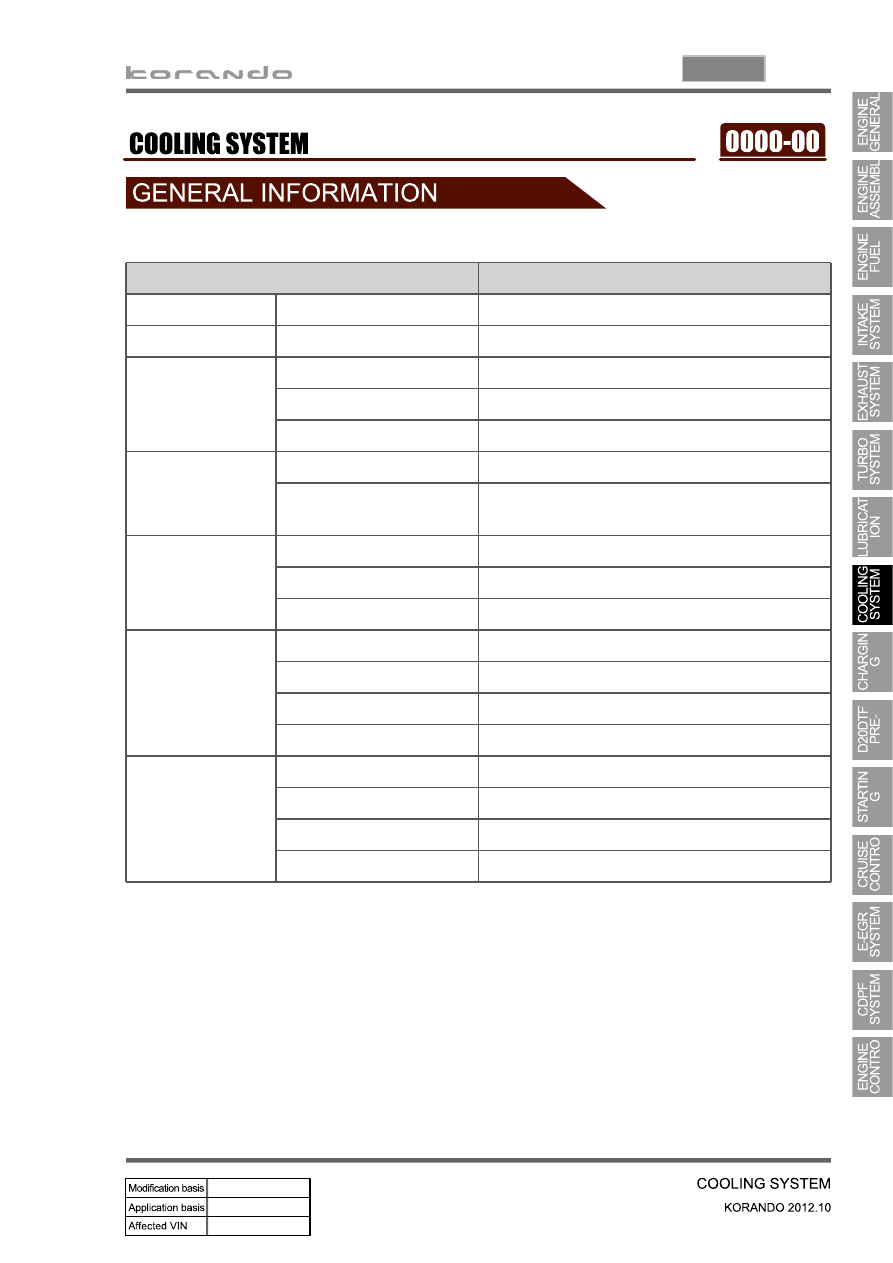SsangYong Korando III (2010 year). Manual - part 52

08-3
0000-00
1. SPECIFICATION
Description
Specification
Cooling system
Type
Water cooling, forced circulation
Coolant
Capacity
11.3L
Radiator
Core size
740W X 380H X 27t (over 281,200㎣)
Flow type
Cross flow
Min. cooling capacity
over 68,000kcal/h
Antifreeze
Type
Long life coolant
Mixing ratio
(water:antifreeze)
50 : 50
Cooling fan module
Type
Electric
Capacity
220W (Ø360) + 150W (Ø360)
Control type
Series: low speed, Parallel: high speed
Coolant reservoir
Capacity
over 2.2L
Circulation
Closed roof type
Pressure cap
Screw type, 1.4bar
Vacuum valve
Screw type, 1.4bar
Thermostat
Type
Wax pallet type
Opening temperature
90℃
Fully open temperature
100℃
Valve lift
8mm